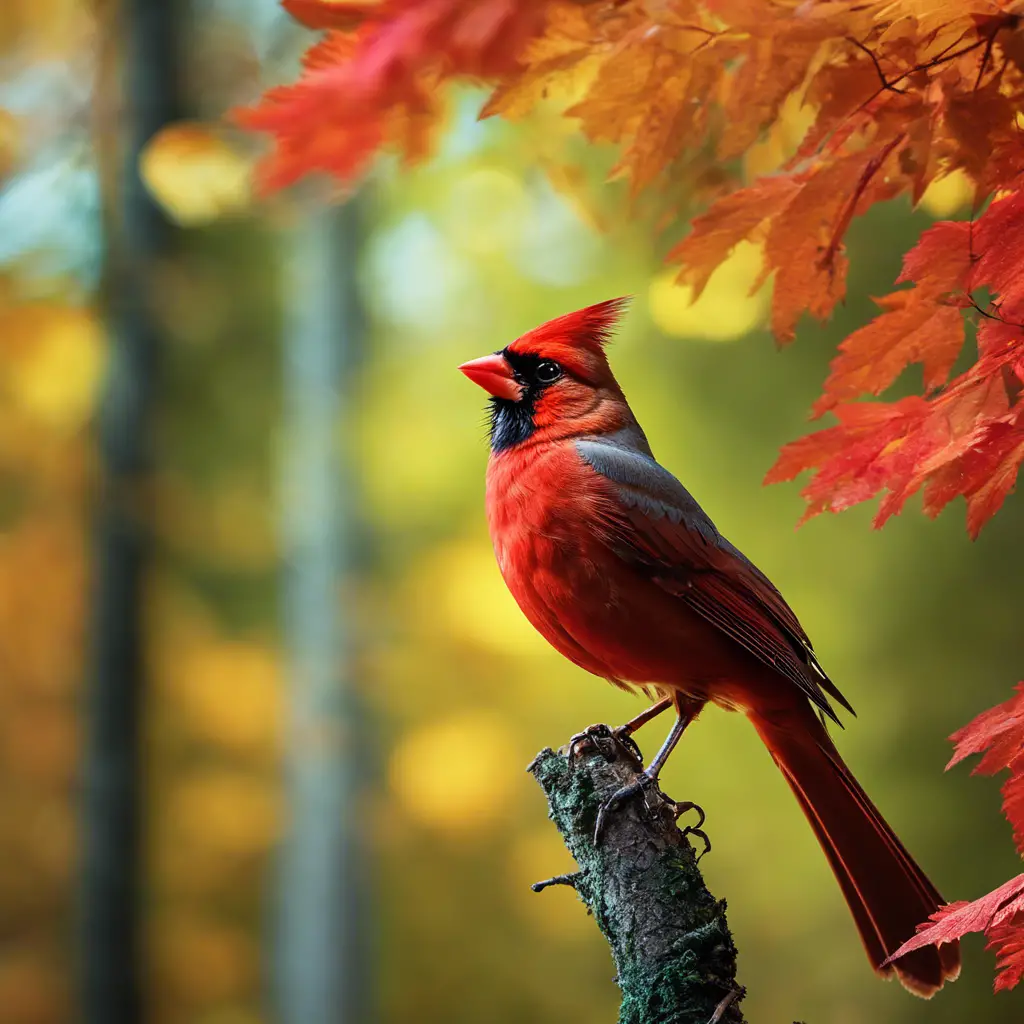As an ornithologist, my experience has deepened my appreciation for the common birds that grace North America.
The American Robin’s song is a melody I’ve come to cherish, a daily reminder of nature’s simple pleasures.
Observing the Northern Cardinal’s vibrant red plumage or the Mourning Dove’s tranquil coo, I believe these birds are not just background characters but pivotal to understanding our ecosystems.
Their behaviors and interactions, often unnoticed, are windows into the complexity of our natural world.
Though common, they each tell a unique story, one that resonates with me every time I step into the great outdoors.
Key Takeaways
- American Robin and Mourning Dove are two of the most abundant bird species in North America, with populations ranging in the hundreds of millions.
- Northern Cardinal and Blue Jay are colorful birds commonly found in urban and suburban areas, adding beauty to outdoor spaces.
- Red-winged Blackbird is a striking bird with distinctive red and yellow shoulder patches, found in various habitats across North America.
- Dark-eyed Junco is a winter visitor across most of the United States, preferring mixed woods and coniferous habitats. Downy Woodpecker is North America’s smallest woodpecker, bringing life and movement to woodlands and backyards.
Discovering the American Robin
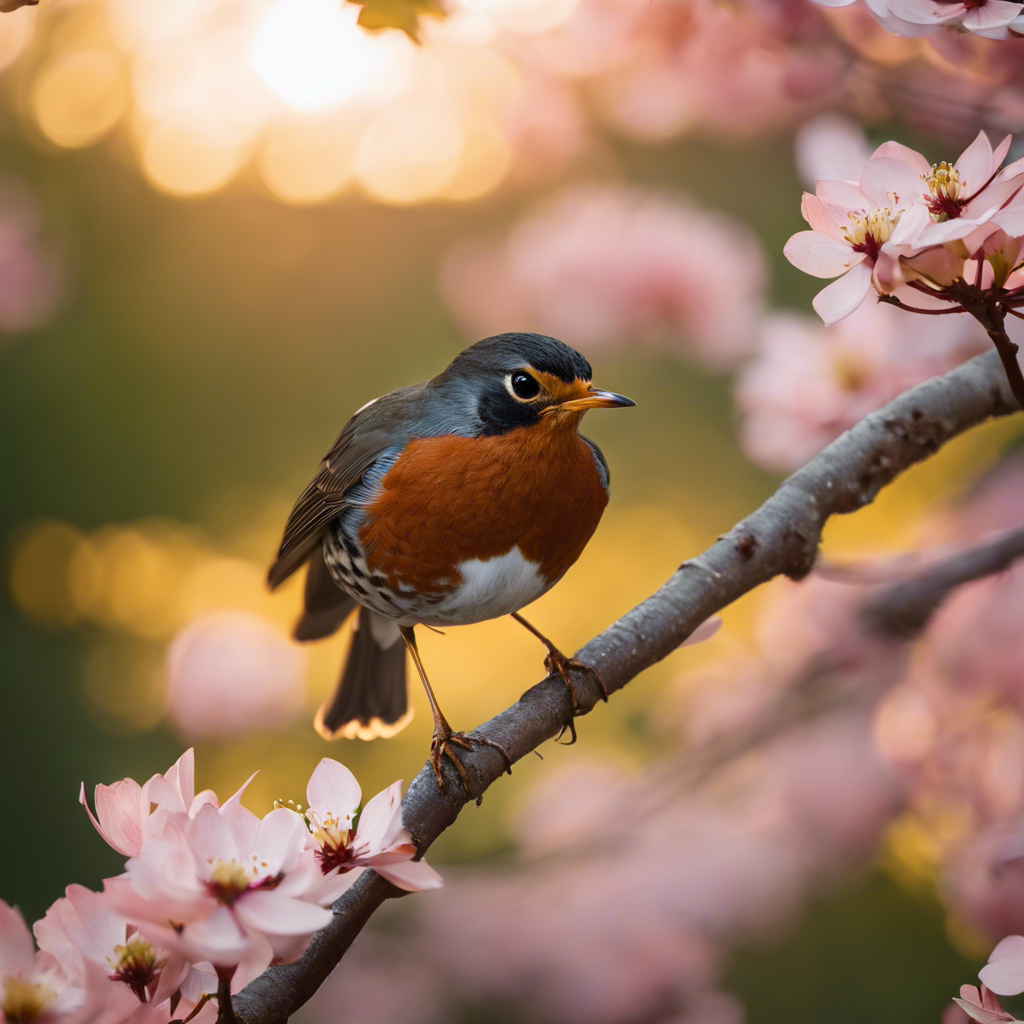
Venturing into the vast landscapes of North America, you’re likely to encounter the American Robin, a bird renowned for its abundance and the cheerful melody that heralds the coming of spring. With an impressive population of approximately 370 million, these adaptable birds thrive in a variety of habitats, from the dense forests of Canada and Alaska to the manicured lawns of suburban neighborhoods in the Lower 48 states.
As spring and summer unfold, you’ll notice their bright red chests as they forage upright across grassy meadows, their distinctive ‘cheerily, cheer up’ song filling the air. Even during the colder months, wandering flocks maintain a familiar presence, ensuring the American Robin remains a beloved and iconic species for bird enthusiasts throughout the year.
Exploring the Mourning Dove

While the American Robin captivates with its vibrant presence, the Mourning Dove offers a subtler charm through its serene coos and remarkable reproductive abilities. As a common visitor in your backyard, mourning doves embody a quiet grace that’s often overlooked among backyard birds. They’re not only abundant but also prolific breeders, capable of raising multiple broods each year.
Here are some key facts about these gentle birds:
- Adapted to open habitats
- Can raise up to six broods annually in warm climates
- Population ranges from 100 to 475 million
- Recognizable by their melancholic coos
- Attracted to backyards with water, birdseed, and various feeder types
Understanding mourning doves enriches your appreciation for the diversity and adaptability of North America’s avian life.
Unveiling the Northern Cardinal
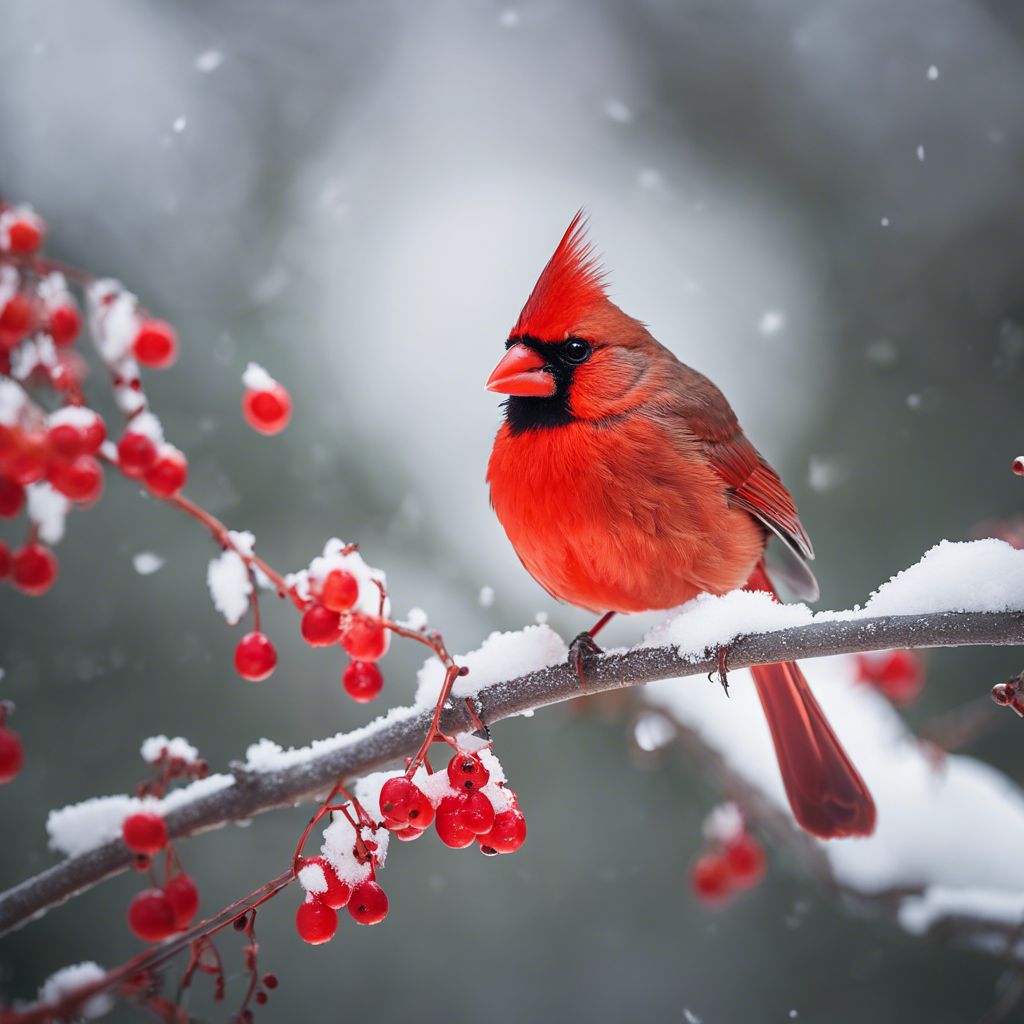
Drawing bird enthusiasts with its striking plumage, the Northern Cardinal stands out as a vibrant addition to many North American backyards. This large red songbird, recognized as the state bird of North Carolina, captivates with its bright red plumage that males proudly display. These males also feature red bills, contrasting sharply with the females’ more subdued, pale brown feathers.
As a species that frequents bird feeders in urban and suburban settings, you can easily invite cardinals to your garden. They’re particularly fond of chopped peanuts, black oil sunflower seeds, and an assortment of berries. By providing these favored treats, you’ll not only support their dietary needs but also enjoy the lively splash of color they bring to your outdoor space.
Observing the Blue Jay
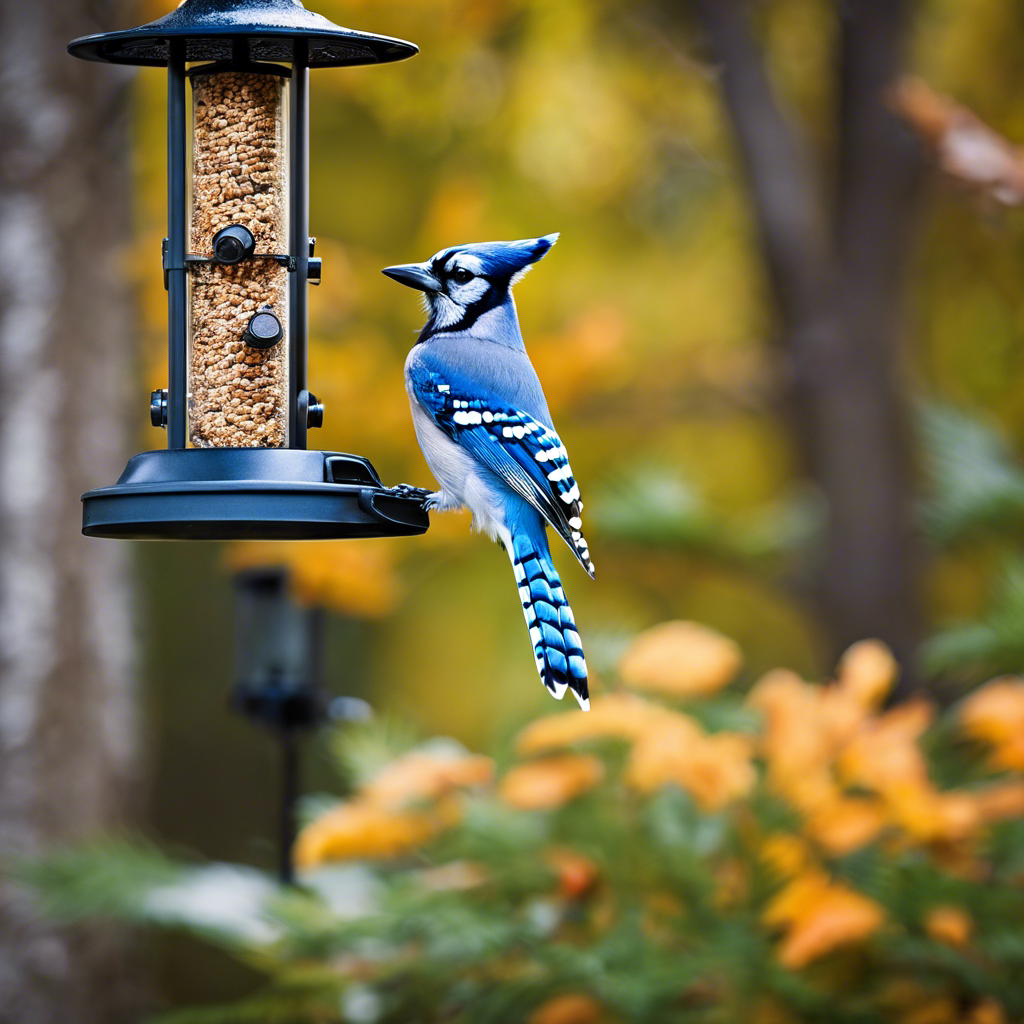
To identify a Blue Jay, look for its unmistakable bold blue, black, and white plumage, complete with a distinctive pointed crest. When you’re keen on observing these vibrant birds, consider these facts:
- Their coloration results from light refraction, not pigments.
- Blue Jays mimic hawk calls, a clever tactic to clear feeders.
- They’ve an expansive range, sometimes hybridizing with Steller’s Jays.
- You’ll find them feasting on a mix of seeds, fruits, and insects.
- The Cornell Lab of Ornithology notes their adaptability to backyard feeders.
This species-specific approach allows you to appreciate Blue Jays on a deeper level. As you watch them, you’ll notice these intelligent birds are more than just backyard visitors; they’re an integral part of North America’s avian community.
Encountering the Song Sparrow
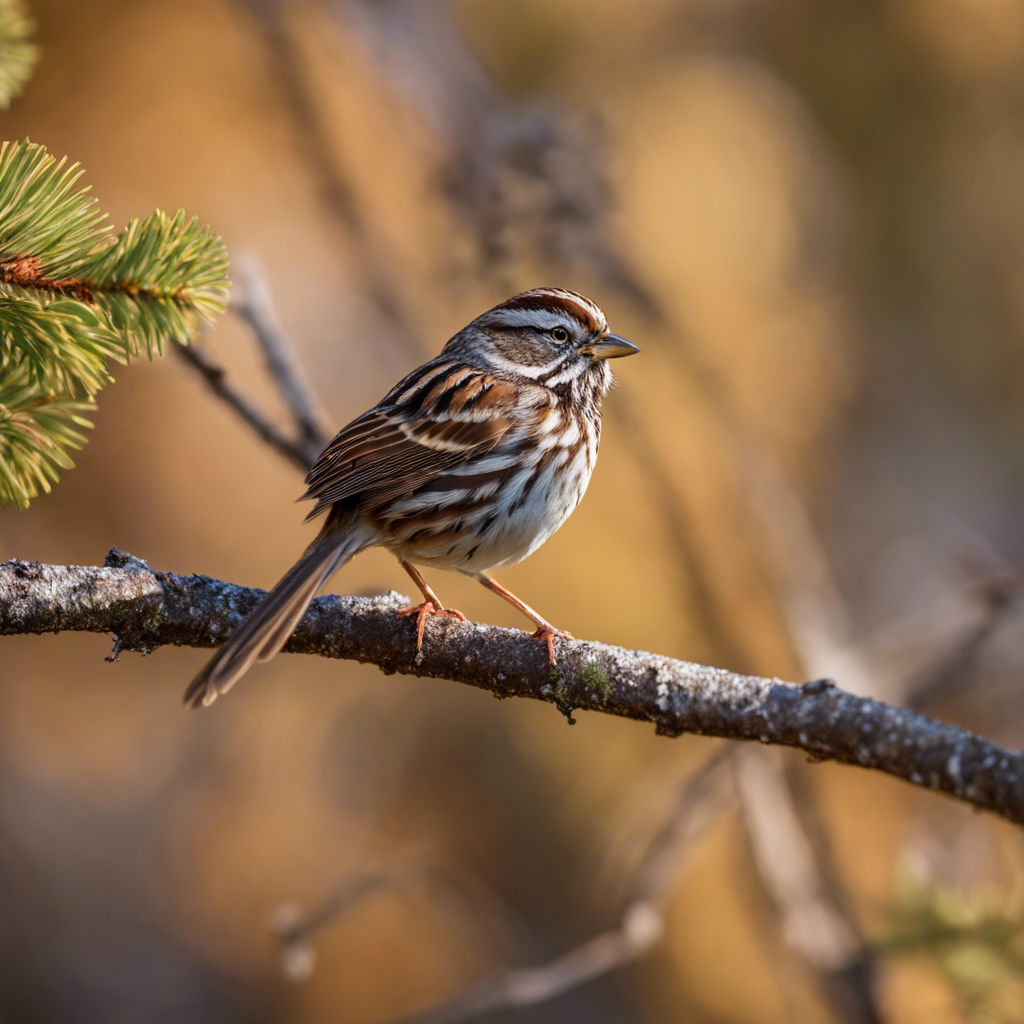
As you wander near North America’s wetlands and waterways, you’re likely to hear the complex melodies of the Song Sparrow, a bird distinguished by its streaked plumage and central breast spot. These melodious bird songs, unique to each individual, serve as territorial markers and mating calls.
The Song Sparrow’s adaptability allows it to thrive in diverse habitats, from dense marshes to your own backyard.
Observing their foraging behavior is fascinating; they employ a ‘double-scratch’ technique to uncover food on the ground. While they primarily eat seeds, their diet is also rich in insects and berries, which they often seek out in the underbrush.
Attracting these songsters to your garden is as simple as providing a seed-filled feeder where you can enjoy their lyrical presence year-round.
Meeting the Red-winged Blackbird

If you’ve spent time near marshes or meadows, you’ve likely seen the striking male red-winged blackbird, easily recognizable by its vivid red and yellow shoulder patches. These birds are among the most common birds in North America, flaunting their black feathers with a glossy sheen.
Here’s what you should know:
- Red-winged blackbirds thrive in various habitats, including pond edges and weedy ditches.
- They boast a significant population, making them a familiar sight across the continent.
- Their adaptable nature is evident in their expansive nesting range.
- Attracting them to your backyard involves providing grains and insects.
- Observing their behavior offers insights into their complex social structures and mating rituals.
Spotting a red-winged blackbird is a testament to the diversity of avian life across North America.
Identifying the European Starling
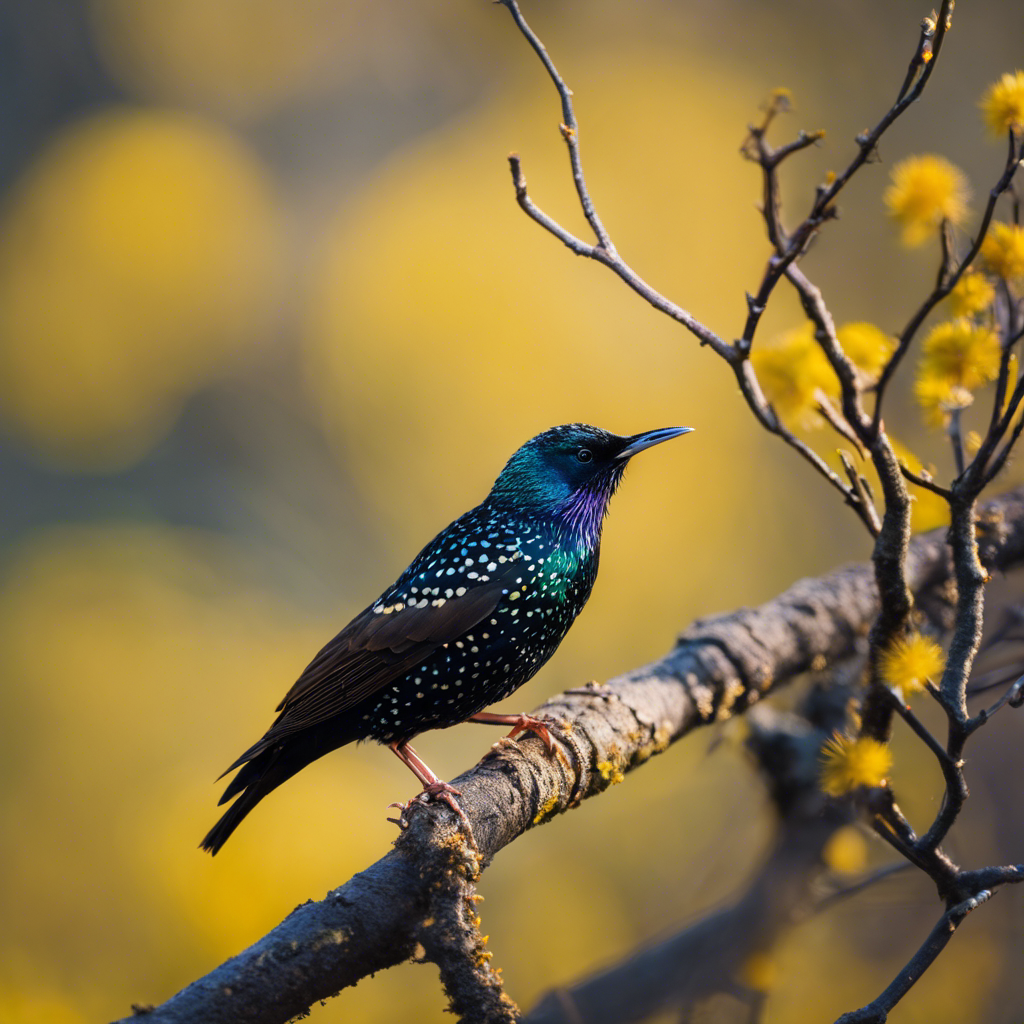
You’ll recognize the European Starling by its iridescent black plumage, which, during breeding season, is speckled with white spots, distinguishing it from other birds in North America. Introduced from the Old English countryside, these medium-sized birds have become a common sight across the United States.
| Feature | Description |
|---|---|
| Size | Medium, 8.5 inches in length |
| Wingspan | Broad, 12-16 inches |
| Tail | Short, square-shaped |
| Bill | Long, slender |
| Flight | Pointed wings with rapid, direct wingbeats |
| Song | Whistles, gurgles, and mimicry |
Their flight is characterized by pointed, triangular wings and they’re known for their complex vocalizations, including mimicry of other species. Keep an ear out for their distinctive song, a mix of whistles and gurgles, which adds to their unique charm.
Appreciating the Mallard Duck
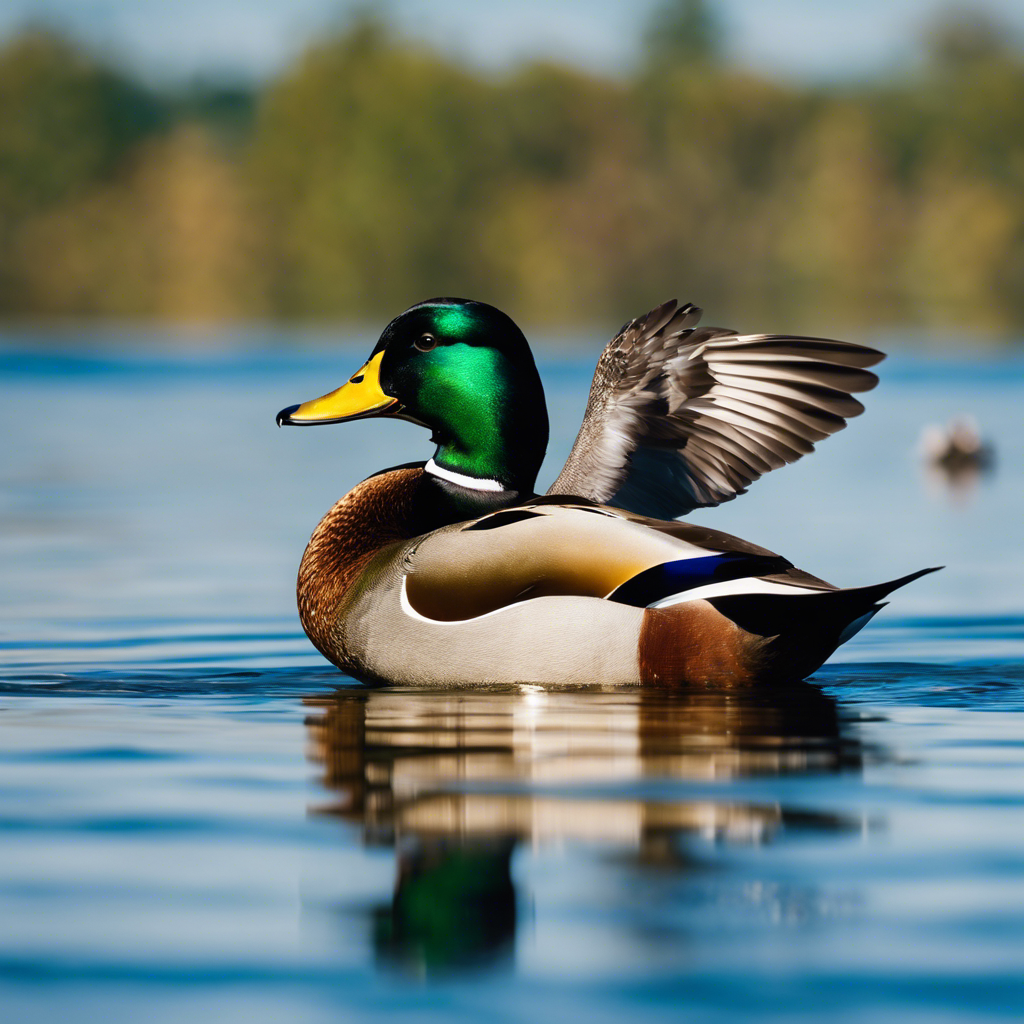
Mallard ducks, easily identified by the male’s vibrant green head and the female’s muted brown plumage, are a familiar sight in waterways across North America. These common birds in North America play a significant role in bird populations due to their adaptability and abundance. Here are some fascinating details about them:
- Sexual Dimorphism: Males sport a striking green head, while females display camouflaging brown.
- Feeding Habits: Mallard ducks are dabblers, foraging in shallow water without diving.
- Migration: They migrate in large V-formations, using great navigational skills.
- Breeding: Females lay an average of 8-13 eggs per clutch.
- Conservation Status: Mallard ducks aren’t currently endangered, thanks to conservation efforts and their versatile nature.
As you observe these ducks, appreciate their ecological importance and striking beauty.
Learning About the Dark-eyed Junco

Amid the forested regions and mountainous terrains of North America, the dark-eyed junco emerges as a common yet distinctive summer bird, boasting a population that ranges between 150 million to 200 million individuals.
You’ll often spot this abundant bird around feeders during fall and winter. Exhibiting a preference for mixed woods and coniferous habitats, dark-eyed juncos are winter visitors across almost all of the United States. They’re recognizable by their dark eyes and pale pink bills, foraging on the ground for seeds and insects.
Dark-eyed juncos exhibit diverse color variations, with subspecies including the slate-colored, Oregon, pink-sided, gray-headed, and white-winged juncos. Each of these subspecies adds to the rich tapestry of North America’s avian life.
Celebrating the Downy Woodpecker

Flitting through the canopy with rhythmic precision, the Downy Woodpecker claims the title of North America’s smallest woodpecker. It is easily identified by its striking black and white plumage and the males’ distinctive red nape patch. You’ll find them in woodlands and your very own backyard, where they bring life and movement.
Here’s how you can enjoy and support these charming birds:
- Offer suet in a suet feeder, a favorite of the downy woodpecker.
- Leave dead trees standing to provide natural nesting sites.
- Plant berry-producing shrubs as an additional food source.
- Use nesting boxes to simulate their preferred nesting cavities.
- Observe their acrobatic feeding antics on tree trunks and branches.
Embrace the presence of these black and white marvels and contribute to the celebration of North American avian diversity.
Frequently Asked Questions
What Is the Most Common Bird in North America?
You’re asking about prevalent avian species; the American Robin tops the list. With a staggering 370 million individuals, they’re crucial for ecosystem health, aiding in pollination and seed dispersal across the continent.
What Is the Most Abundant Wild Bird in North America?
You’re right to be curious; the most abundant wild bird in North America is the American Robin, with its substantial population of over 370 million, reflecting a thriving presence across various ecosystems.
What Are the Most Common Birds?
You’ll often see American Robins, Northern Cardinals, and Red-winged Blackbirds, as they’re ubiquitous across various habitats. Catering to their preferences can bring a delightful array to your own backyard.
What Were Once the Most Abundant Birds in North America?
You’re likely curious about historical populations; the Passenger Pigeon was once North America’s most abundant bird, with billions flying the skies before their unfortunate extinction in the early 20th century.
Conclusion
As you’ve journeyed through the lives of some of North America’s most common birds, you’ve gained insight into their unique behaviors and habitats.
From the American Robin’s earth-tugging worm hunts to the Northern Cardinal’s vibrant displays, each bird plays a vital role in our ecosystem.
Whether it’s the Mallard’s serene glide across a pond or the Dark-eyed Junco’s flitting in winter gardens, these birds’ presence enriches our natural tapestry.
Keep observing; there’s always more to learn and admire.

An avid ornithologist, zoologist and biologist with an unwavering passion for birds and wild animals.
Dr. Wilson’s journey in ornithology began in childhood and led him to obtain a Ph.D. in Ornithology from the prestigious Avian Research Institute. He has worked closely with renowned experts in the field and conducted extensive research and field studies globally.

